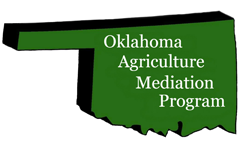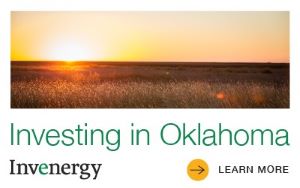Mon, 03 Oct 2022 12:43:10 CDT
Farm Director, KC Sheperd, caught up with State Climatologist Gary McManus and talked about his presentation at the Emergency Drought Commission’s second meeting this past Friday.
“Just working on another very dry spell across Oklahoma,” McManus said. “We have had several this summer dating back to early June and then here in September into early October, we are now working on more than a month of just very dry conditions and also above normal temperatures, which doesn’t help things either.”
When you look at the U.S. drought monitor report, McManus said the darkest red colors indicate a D4 drought level.
“That is considered a 1 in 50 to 100-year event,” McManus said. “We have a lot of that down from just southeast of Oklahoma City metro down into southeast Oklahoma, into parts of Southern Oklahoma and also up into other parts of the state as well- some smaller areas. So, that doesn’t mean we only see those droughts once every 50 or 100 years, because we have seen those once in 50 or 100 years quite often in the last 10 to 15 years in Oklahoma. It just means that they are supposed to be pretty rare, but that is not how it has been working for us here in the state.”
Now, McManus said, we are no longer in a flash drought, we are just in a regular drought.
“It’s really two droughts in one,” McManus said. “So, we had that flash drought that began in early June, but we also had remnants of that longer-term drought that started back in August of 2021. Much of the state was relieved of that long-term drought when we went through that wet April and May, into the first 10 days of June, but some of that across western Oklahoma and the panhandle was still in place when the flash drought began.”
It is very rare, McManus said, that we have been faced with a triple-dip La Nina.
“La Nina usually occurs in the cool season,” McManus said. “It is that cooling of the oceanic waters and that equatorial pacific off the west coast of South America. It occurs every three to five years, but sometimes we get double dip La Nina’s or two cool seasons in a row, and now we have a very rare triple dip La Nina, so a third La Nina episode going on right now through the cool season.”
La Nina’s, McManus said, often bring warmer and drier conditions through the cool season to Oklahoma.
“A triple dip La Nina is not good news for Oklahoma if it does end up bringing us warmer and drier conditions as we go through this cool season,” McManus said.
McManus said there is a slight chance of some very low rainfall amounts coming at the end of this week with a strong cold front through the weekend, but that is not drought-busting rainfall.
“You look further out into the longer-range model output, we do see various rain events early next week, and later into next week, but I like to call those fantasy casts because that is beyond probably the scope of what our models could find,” McManus said. “Then, when you just look at the long-term outlooks from the climate prediction center, the climate prediction center does show increased odds of above normal temperatures and below normal precipitation not only through October but through the end of the year.”
McManus said there’s always a chance of a good rain event showing up on the outlook in the future, but he does not see anything right now.
McManus said that one of the problems we have seen through this drought is that there is a lot of time in between rains. He added that this has caused soil moisture to plummet across the state and makes it hard for those trying to plant wheat right now.
“We have seen up in the 90th percent range on the short to very short USDA topsoil moisture,” McManus said. “That is probably going to be even higher this week. It was 91 percent last week. I’m sure it will be up in the mid-90s this week.”
McManus said Oklahoma is going to need multiple rainfall events of moderate intensity to help moisten the soil.
Click the LISTEN BAR below to listen to KC’s entire conversation about Oklahoma drought conditions.


















